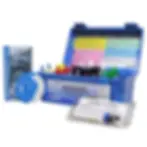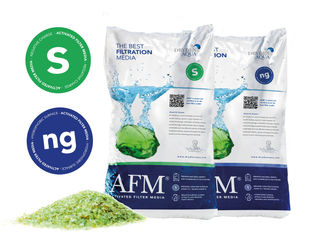
Before you read this post. Throw away your test strips and get a Taylor K-2006 test kit.
It comes in two sizes. It also has the FAS-DPD option. Understanding these water tests are critical to maintaining a clear and safe pool!

Chlorine and pH are the most important tests and levels to maintain in your swimming pool.
pH range 7.2-7.8 Ideal 7.5
Free chlorine 1.0-3.0 (this parameter can vary depending on geography, temps, and CYA levels) more on this later.
Total alkalinity is a test to determine the amount of buffering in the water there is. TA values of 80ppm to 120ppm will help to maintain pH values. A range of 60ppm to 150 ppm is acceptable, depending on your LSI. (saturation index) more on this later also!
Chlorine in the pool is mainly referred to as "free chlorine" this is the chlorine that is available in the water to kill bacteria in the pool. "Combined chlorine" is the chlorine in the pool that has done its job, and has combined with the bad stuff in your water. Also know as chloramines. Chloramines cause the bad chlorine smell and becomes an irritant.
Any amount of combined chlorine in the pool water is no good. At .4-.5ppm chloramines must be removed by "shocking" the pool. The process of shocking the pool requires you to add enough chlorine to the water to achieve break point. Break point releases the combined chlorines and allows it to be free again! "Total chlorine" is the combination of free and combined chlorine in the water. The Taylor K-2006 test kit with FAS-DPD powder is the most accurate way to determine, free, combined and total chlorine.
Free chlorine is removed from the water by the sun's UV rays. To reduce this, a small amount of "stabilizer/conditioner" is needed in the pool water. Cyanuric acid is what we test for to find our stabilizer levels. (CYA) 30-50ppm is plenty for a non salt generator pool. If you have a "salt water generator" 80ppm is acceptable.
Very important note. If you have CYA in your pool, your minimum free chlorine level will need to be higher! Using the 20:1 ratio: example, a 40 CYA will require a minimum free chlorine of 2.0. Example: a 60 CYA will require a free chlorine value of 3.0ppm.
Calcium hardness levels in a swimming pool are generally between 200 and 400 ppm. This range helps prevent both scaling and corrosion within the pool and its surfaces. Some sources suggest a wider range when the pool is a vinyl liner pool, 150-400 ppm as acceptable. Calcium hardness measures the amount of dissolved calcium in the pool water, influencing how well the water interacts with the pool's surfaces.
Too low:
Low calcium hardness can lead to etching or corrosion of plaster, grout, and pebble surfaces, especially in concrete or fiberglass pools.
Too high:
High calcium hardness can cause scaling, making surfaces feel rough and potentially clogging equipment and piping.
Saltwater pools:
If you have a saltwater generator, aim for the lower end of the range (closer to 200 ppm) to minimize the risk of scaling, as salt pools tend to have higher pH levels.
Phosphates: some phosphate removal products can be less effective when calcium levels are low





